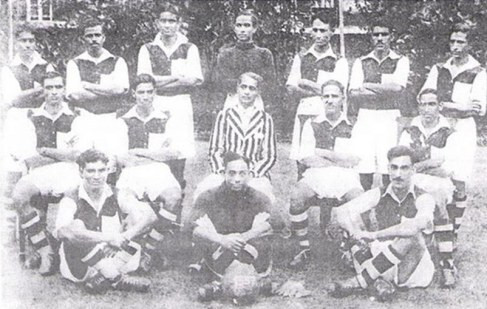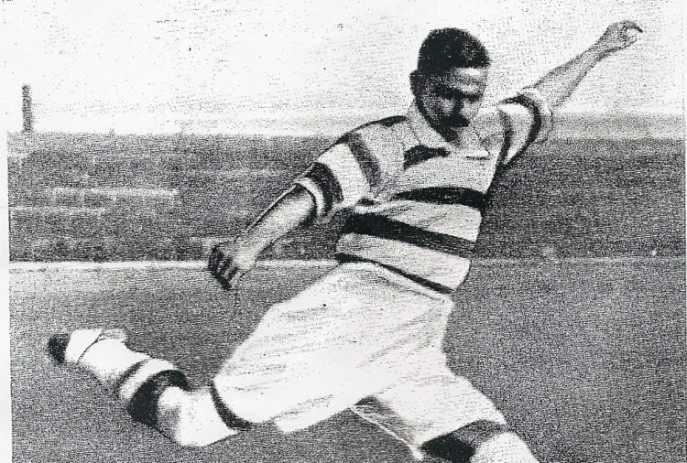Salim is a wonderful football talent of the subcontinent. But he is a forgotten name. Lost in history. His name is no longer mentioned in the history of football. But he was a legendary footballer in the true sense. His life, his sports style, his anecdotes are proverbial. He was a footballer of the golden era of Kolkata Mohammedan Sporting Club. And he is one of the builders of the Golden Age. Because of this, he is not supposed to be lost. But his biggest identity is that he is the first footballer from the subcontinent to play for a European club. For this reason alone, he is supposed to be the proverbial man of football. But why didn’t it happen? But the fame he built during that British colonial reign was made possible by his immense courage and ruthless style of football. He was an extraordinary and exceptional footballer. It is not an exaggeration to say that he is a rare footballer. He played barefoot. Corner kicks, free-kicks or centering with a little stop, he was a terror to the opposition. He was the type of football player whose feet would make the opponent’s chest hard when he had the ball at his feet. A player like him is rarely seen. He mesmerized the domestic and European audiences with his magical athleticism.
Muhammad Abdul Salim was born in 1904 in a low-class family in Metiaburoj, Calcutta, West Bengal. He had no interest in formal education in football. From his childhood, high-quality football skills can be seen in him. Mohanbagan Kabir’s IFA Shield win in 1911 attracted him to football. In the 1920s and 1930s, Indians continued to struggle for freedom from colonial British rule. Many Indians chose to respond to the British with football. They played loose and beat the booted British. In such a context, in 1926, Salim had no problem joining the ‘Chittaranjan Kabe’ of Boubazar, central Kolkata. A team of educated Bengali middle class managed to instill in Salim a repressed desire to defeat the Europeans on the football field. Salim then joined Calcutta Mohammedan Sporting Club’s ‘B’ team and played in 1926 and 1927. Seeing his outstanding talent, legendary Bengali sports administrator Pankaj Gupta recruited him to play for his club Sporting Union. He played in this club till 1931. Then in 1932, Salim came from East Bengal to the famous sports personality of Bengal Chone Majumdar’s Arians Kabe.


As Willie Malle knew well, it was difficult for an Indian barefoot footballer to compete with Scottish professional footballers. Still he agreed to take Salim’s trial with permission from the Scottish Football Association. Three registered coaches and 1,000 members of the club were present on the day Salim was called to demonstrate his skills. They were amazed by Salim’s performance in bare feet and decided to play the club’s next two matches. Although both the matches were friendlies. That is why this match did not enter the pages of two records. The first match was against Hamilton Academical Football Club. Celtic won 5-1 in Salim’s debut match. The way he scored from the penalty was something to watch. He played a key role in Celtic’s 7–1 win against Galston FC on 28 August 1936. Describing Salim’s magical acrobatics under the headline ‘Indian Juggler-New Strale’, The Scottish Daily Express wrote the day after the game, ‘Celtic FC player from India danced last night against Galstone at Parkhead (a district of Glasgow, Scotland). Ten Fingers captivates the audience. He cleverly managed to fool the opposition defenders by twisting his toes in a strange way and gently tapped the ball into the center position. After that, there was no way but not to score. Three of Celtic’s seven goals last night came from his moves. He did not agree when asked to take a penalty. He was shy. Can’t speak English. His brother translated. Bhai Hashim thinks Salim is amazing, the audience really witnessed that last night.’
On the same day the ‘Glasgow Observer’ newspaper wrote, ‘Celtic’s Indian international Salim delighted the crowd at Celtic Park on Friday with his astonishing control of the ball. Barefoot he was eye-catching. His black skin is more important than Celtic’s white and green jersey. His game was the best. He sent every ball exactly where he wanted it to go. Not an inch has changed. His cross towards goal is waiting to touch the net.’

Alan Brake’s ‘Book of Scottish Football’ wrote about Salim’s game, ‘Celtic took a great initiative by playing Indian footballer Salim against Galston. Salim played barefoot. His legs are tightly bandaged as seen in the picture. Mohammad Hashim has rightly spoken of him. He has proved that he is an expert in trapping and lobbying at the goal. He overwhelmed opposition defenders and all seven goals were mainly his own efforts. Foreign footballers are not rare at all. But they all played in boots. Salim stuck to his native style and showed his athleticism without boots. His perfect shooting and ball control delights the audience.
Salim soon became homesick and restless to return to India. Celtic made many requests for him to play a season in Scotland. He even offered to organize a charity match for him and give him five percent of the gross proceeds. Salim refused and offered to donate £1,800 of the proceeds from the match, a lot of money in the context of the time, to local orphans. Because the orphans were supposed to come to the charity match. Salim was also offered a professional contract to play in Germany. Eventually he returned to India and joined Mohammedan Sporting Club. Then the football season of 1937 Calcutta was waiting to start. Then, forgetting Europe, he abandoned himself to the Mohammedans. But football in Calcutta did not have any financial ties at that time. There is no question of running a family by playing football. But if he played in Europe, he would not have any financial problems. But he overcame all the temptations and returned to his homeland. He has to live in financial turmoil.
When Salim fell ill in his old age, his second son Rashid Ahmed wrote to the Celtic Club informing him of his illness and stating the need for financial assistance for his treatment. Although Rashid Ahmed said in an interview, ‘I had no intention of asking for money. I just wanted to know if Muhammad Salim is still alive in their memory. I was very surprised to receive a letter from the Celtic Club. Inside the envelope was a bank draft for £100. I am very excited about it. Not just because of the money, but because my father is still in Celtic pride. I have not broken this draft. As long as I live, I will save it. My father was the first Indian footballer to play in foreign soil, I want it to be written somewhere. That is what I want. Nothing more than that.’
In 1976, Salim received the ‘Bidhaan Chandra Roy State Award’. But the size of the footballer he was, he was not really evaluated. He was not given proper status. This amazing talent in football history remains unrecognized and neglected.
After Salim’s death on November 5, 1980, ‘Amritbazar’ newspaper wrote, ‘Mohammed Salim, one of the members of the famous Mohammedan Sporting Club, which won five consecutive titles in the Calcutta Senior Football League in the thirties, passed away on Wednesday morning. He was 76 years old. He was a right winger during his playing career. He was closely involved with numerous clubs and was very interested in training youngsters. He is survived by his wife, four sons and three daughters.’ The fact that he played for Celtic FC was not mentioned in the obituary. It is no less surprising that he has been neglected and not mentioned much in Indian sports history despite his incredible feats. Even one of India’s greatest footballers and coaches PK Banerjee was aware of Salim’s sporting style.
Challenging British supremacy in any way in colonial India was a very difficult task. Muhammad Salim made this impossible possible through football. He explained that barefoot Indians could compete with the British. In the midst of religious upheaval and political and economic uncertainty, he convinced Indians that even colonial states could succeed on the playing field. At the same time, he explained that Indians are not behind Europeans in terms of talent. Alas! Now this will not seem credible to anyone. Because, a rare breed of footballer like Salim cannot be found anywhere in the subcontinent. Footballers of this stature are not born in centuries, let alone centuries.



